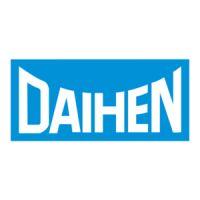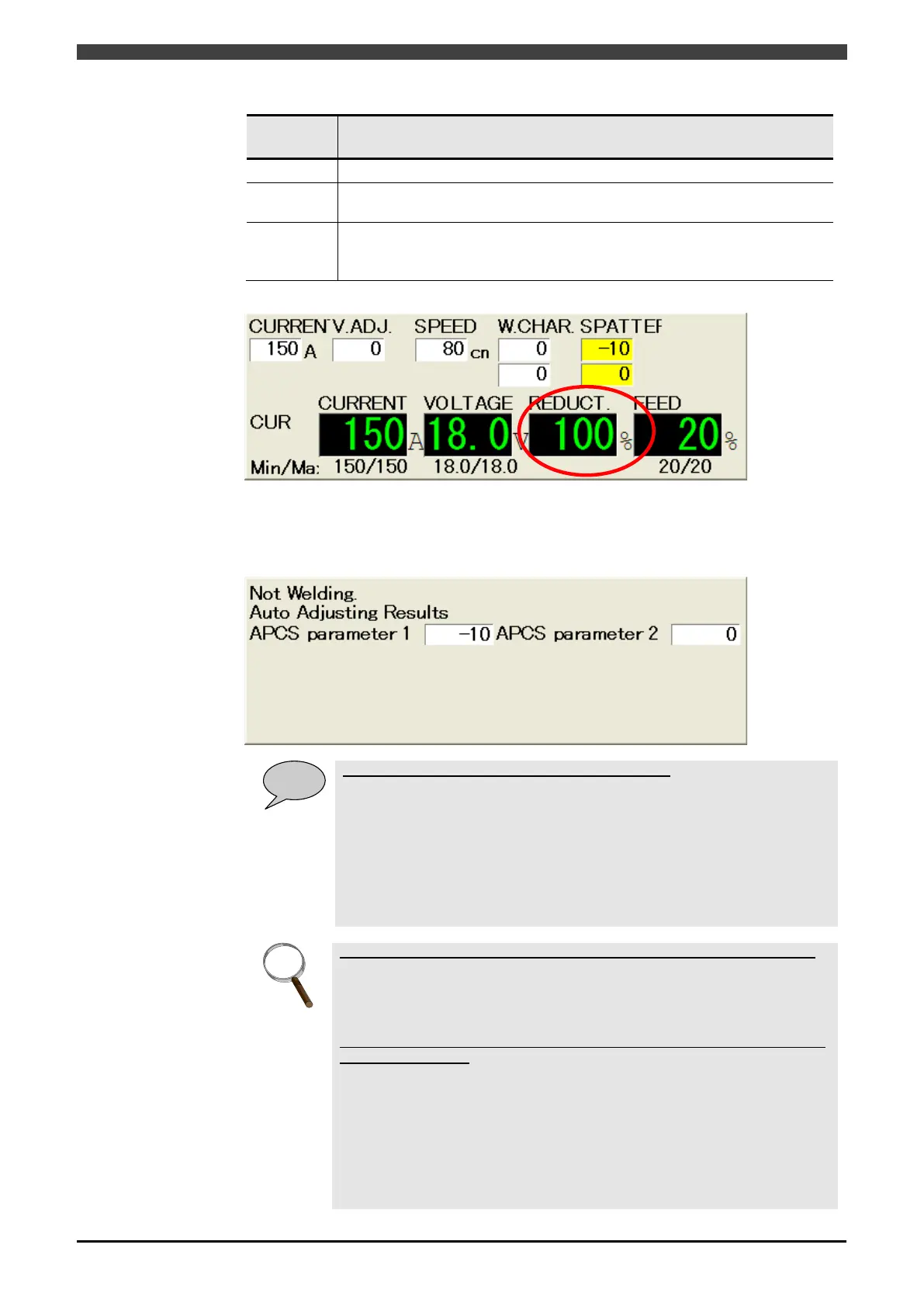3.8 Welding conditions of WB-M350L/M400L
3-26
Table 3.8.2 Reduction rate
Reduction
rate (%)
Denotation
100 to 90 “Necking” detection has been performed properly.
90 to 70
“Necking” detection has been performed basically.
The reduction rate may be improved by reviewing the working environment.
Under 70
Review the working environment in accordance with “working environment
checklist” described in the instruction manual for the welding power source.
In addition, if the welding is unstable, review the welding conditions.
The automatic adjustment results are displayed on the arc monitor upon completion of welding
(after the AE command has been executed). If, however, welding is suspended due to a
temporary stop or other action, the adjustment results immediately prior to the action will be
displayed.
How to reduce the spatter and keep the condition
In order to reduce spatter, it is necessary for necking to be detected properly.
To this end, the arc voltage must be fed back accurately. If the voltage cannot
be obtained properly because the arc voltage feed back is affected by noise,
the necking will not be detected properly, and this will give rise to spatter.
Furthermore, the automatic necking sensitivity adjustment function will not
work properly either. If the welding is unstable and large amount of spatter
are generated, review the routing of the voltage detection cable in
accordance with the “working environment checklist” described in the
instruction manual for the welding power source.
How to automatically adjust APCS parameter specifying the initial value
It is possible to set the initial value to APCS parameter. To set it, first, select
“TEACH” for the spatter adjustment method and input the values in “APCS
parameter 1 EP/EN” or “APCS parameter 2 EP/EN”.
Then, select “AUTO” for the spatter adjustment method and store the data.
How to reflect the results of the automatic necking sensitivity adjustment
in the AS command
When the automatic necking sensitivity adjustment function is enabled (AUTO
is selected as the APCS cond. s
etting), the background of “Spatter” on the arc
monitor turns yellow.
At this point, press [Edit] on the arc monitor to establish a status which
enables on-
line changes to be made. When f12 <Complete> or [Edit] is
pressed, the APCS parameters set at the time are stored in the memory as
the conditions of the AS command.
As with on-line changes, these parameters can also be stored in the memory
automatically upon completion of welding.

